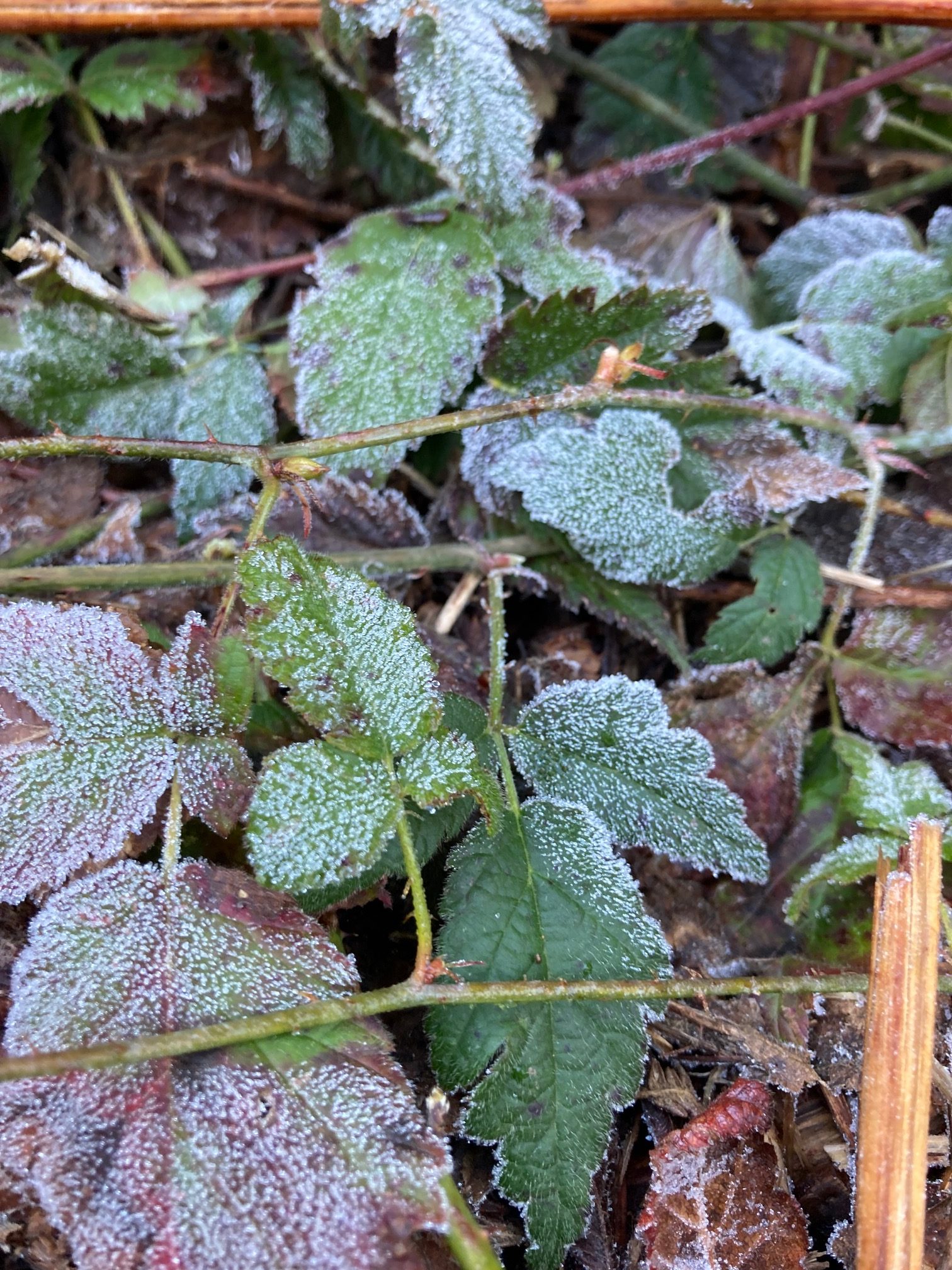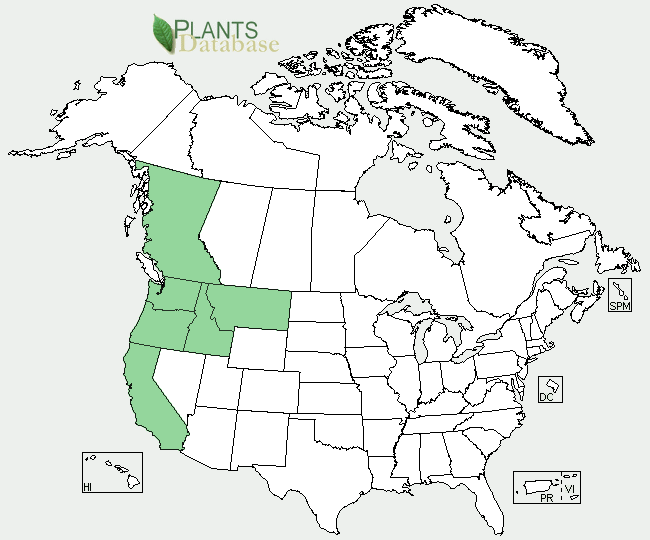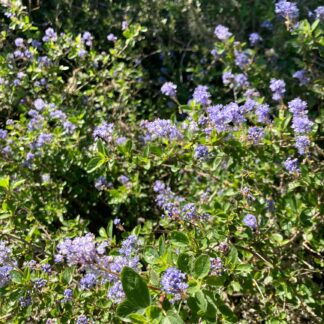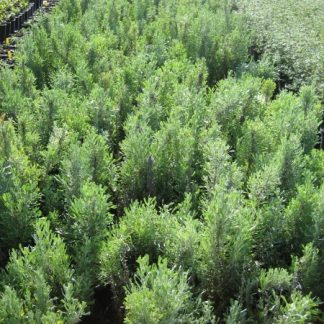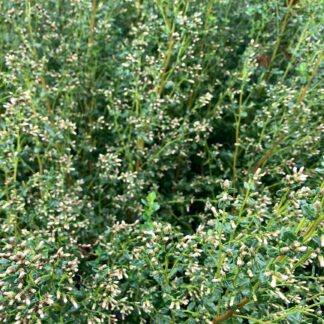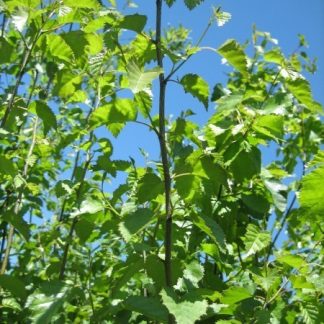Rubus ursinus
trailing blackberry, dewberry
Habit: a deciduous perennial with extensive climbing vines, each one measuring 15 feet long or more. The slender stems are armed with curvy prickles and covered with a white waxy bloom. Leaves are alternate, sometimes hairy, and are pinnately compound. 3 leaflets with lobed or coarsely toothed margins form each leaf; the largest one, in the center, measures up to 3 inches long. From mid-spring to mid-summer, flat-topped clusters of white or pinkish flowers adorn second-year canes. Drupelets of small, shiny back fruit follow the flowers. As with other blackberries, the drupelets are fused to the receptacle and break off as a unit when harvested. In the fall, the dark green leaves turn red.
Ecology: Commonly found in woods, prairies and disturbed sites, such are burned or logged forests, at low to mid elevations. Its crawling stems are often encountered alongside trails and can easily get caught on the feet of inattentive hikers. Its native distribution ranges from southwestern British Columbia through California, and from the coast to the Cascade Range. Occasionally, this species is found west of the Cascades as well, in Oregon, Washington and Idaho.
Growing conditions: full sun or partial shade and moist to dry soils. Rubus ursinus can be aggressive in the garden, and should be planted on a far corner over a fence or trellis so that it can grow into more manageable, organized vines. This native blackberry has an excellent flavor and has been used to develop several named cultivars, such as loganberries and boysenberries.
Native American tribes used trailing blackberry in several rituals and for medicinal purposes as well. The Coast Salish, for example, scrubbed the stems on their body during purification rituals, and used leaves and roots to treat cholera, fevers and other ailments. Rubus ursinus is also known as dewberry and wild blackberry.
Specs
Deciduous Shrub
1.5 - 3 ft (1-3 m)
3-15 ft (1-5 m)
5b to 9b

